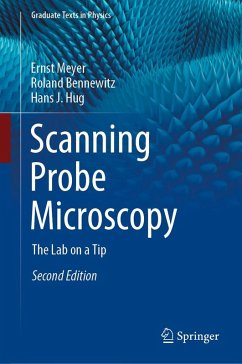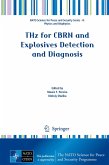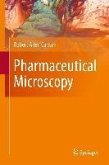Written by three leading experts in the field, this book describes and explains all essential aspects of scanning probe microscopy. Emphasis is placed on the experimental design and procedures required to optimize the performance of the various methods described. The book covers not only the physical principles behind this popular technique, but also tackles questions on instrument design, the basic features of the different imaging modes, and recurring artifacts. Novel applications and the latest research results are presented, and the book closes with a look at the future prospects of scanning probe microscopy, while also discussing related techniques in the field of nanoscience.
This second edition includes essential scientific updates reflecting the latest research, as well as coverage of new breakthroughs in techniques such as submolecular imaging by atomic force microscopy (AFM), multifrequency AFM, high-speed imaging of biological matter, scanning x-ray microscopy, and tip-enhanced Raman scattering.
The book serves as a general, hands-on guide for all types of classes that address scanning probe microscopy. It is ideally suited for graduate and advanced undergraduate students, either for self-study or as a textbook for a dedicated course on the topic. Furthermore, it is an essential component of any scanning probe microscopy laboratory course and a valuable resource for practicing researchers developing and using scanning probe techniques.
This second edition includes essential scientific updates reflecting the latest research, as well as coverage of new breakthroughs in techniques such as submolecular imaging by atomic force microscopy (AFM), multifrequency AFM, high-speed imaging of biological matter, scanning x-ray microscopy, and tip-enhanced Raman scattering.
The book serves as a general, hands-on guide for all types of classes that address scanning probe microscopy. It is ideally suited for graduate and advanced undergraduate students, either for self-study or as a textbook for a dedicated course on the topic. Furthermore, it is an essential component of any scanning probe microscopy laboratory course and a valuable resource for practicing researchers developing and using scanning probe techniques.
Dieser Download kann aus rechtlichen Gründen nur mit Rechnungsadresse in A, B, BG, CY, CZ, D, DK, EW, E, FIN, F, GR, HR, H, IRL, I, LT, L, LR, M, NL, PL, P, R, S, SLO, SK ausgeliefert werden.
From the reviews:
"This book provides a nice and clearly written introduction to scanning probe microscopy (SPM) ... . It addresses a large audience that ranges from high school teachers to undergraduates to graduate students and post-docs in physics and biology." (opn - Optics & Photonics News, Vol. 16 (9), 2005)
"In this book, the authors aim to give a general introduction to SPM and highlight some of the many applications of this technique. ... the book succeeds in conveying the wide range of SPM techniques and their applications in an enthusiastic manner. ... it is well referenced and will serve as a good starting point for further studies. However, it will be of most use to researchers and students with a particular interest in SFM and MFM." (Steven R Schofield, The Physicist, Vol. 41 (3), May/June, 2004)
"The book is well written and well laid out, providing a good, logical progression from one subject area to the next. Generally, a goodbalance between theory and experiment is struck, with an appropriate number of quite beautiful images. ... References are plentiful and appropriate ... . the book's sub-title The Lab on a Tip is entirely appropriate. I thoroughly recommend this book to anyone who is interested in applying any SPM technique ... . (Dr. M. Salt, Contemporary Physics, Vol. 45 (6), 2004)
"This book provides a nice and clearly written introduction to scanning probe microscopy (SPM) ... . It addresses a large audience that ranges from high school teachers to undergraduates to graduate students and post-docs in physics and biology." (opn - Optics & Photonics News, Vol. 16 (9), 2005)
"In this book, the authors aim to give a general introduction to SPM and highlight some of the many applications of this technique. ... the book succeeds in conveying the wide range of SPM techniques and their applications in an enthusiastic manner. ... it is well referenced and will serve as a good starting point for further studies. However, it will be of most use to researchers and students with a particular interest in SFM and MFM." (Steven R Schofield, The Physicist, Vol. 41 (3), May/June, 2004)
"The book is well written and well laid out, providing a good, logical progression from one subject area to the next. Generally, a goodbalance between theory and experiment is struck, with an appropriate number of quite beautiful images. ... References are plentiful and appropriate ... . the book's sub-title The Lab on a Tip is entirely appropriate. I thoroughly recommend this book to anyone who is interested in applying any SPM technique ... . (Dr. M. Salt, Contemporary Physics, Vol. 45 (6), 2004)









